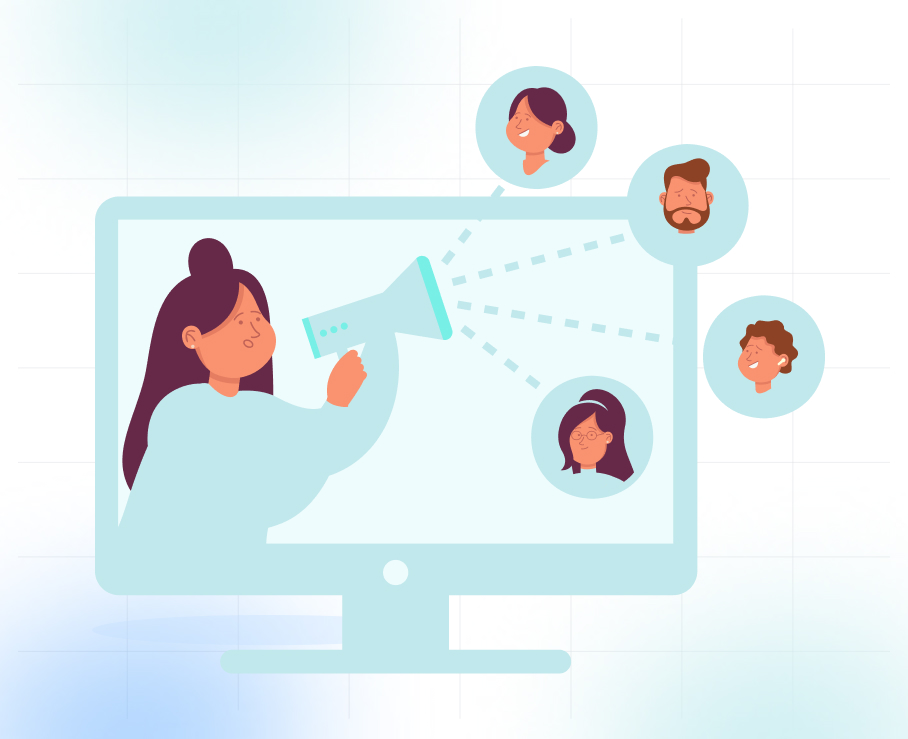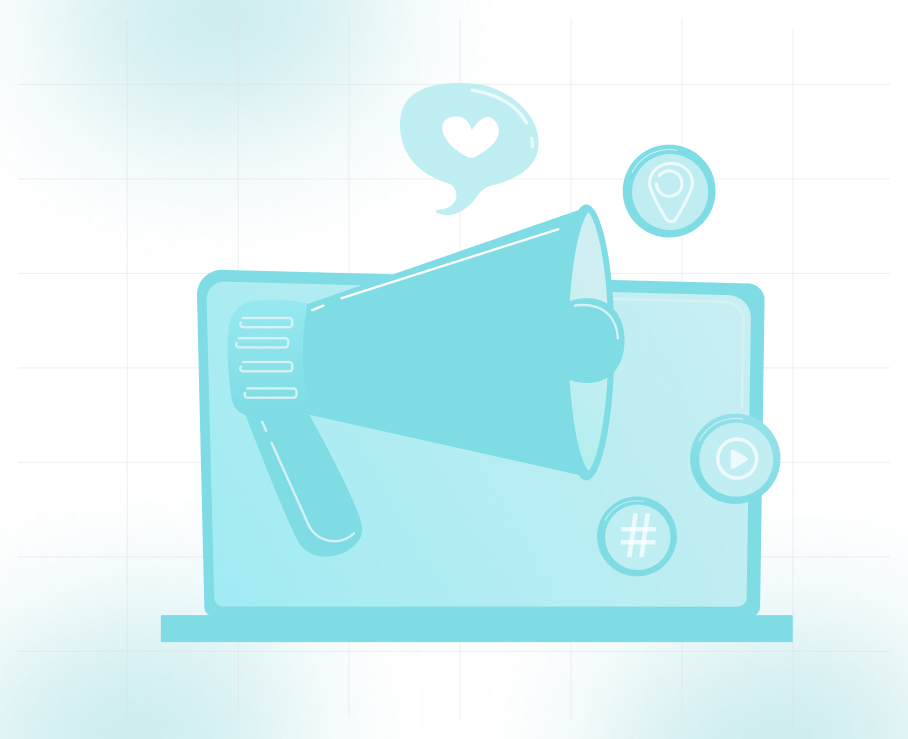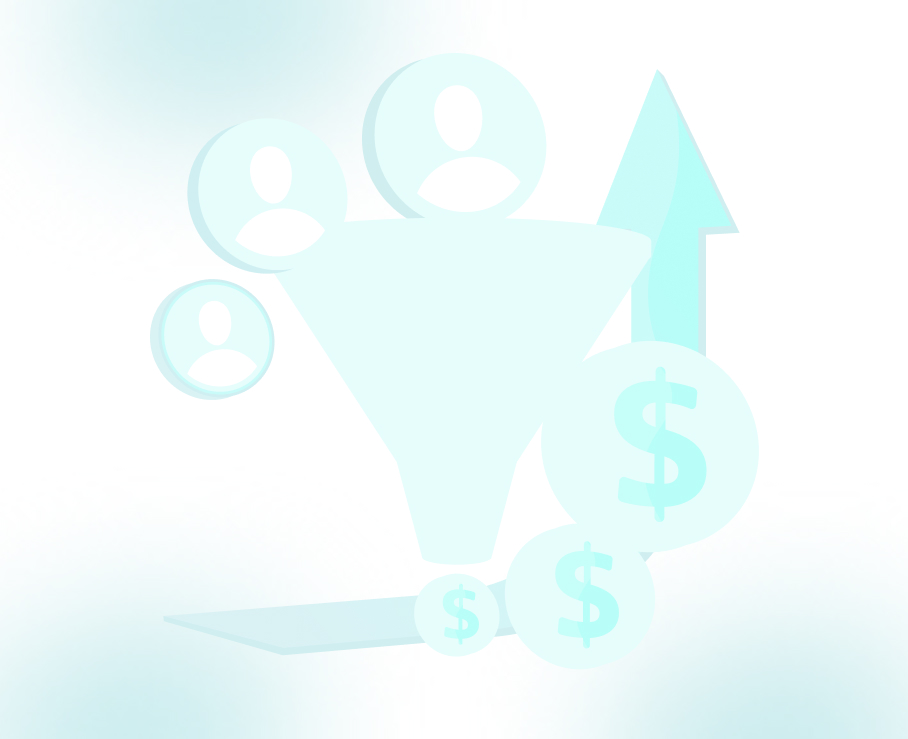
Effective Email Marketing for Demand Generation

Email marketing remains one of the most effective tools for demand generation in B2B sales. For every $1 spent, businesses see an average return of $38, making it a channel worth getting right. Yet, many small and mid-sized enterprises (SMEs) face common roadblocks: low engagement, poor list quality, and lack of clarity on what actually drives conversions. Without the right approach, even well-intended campaigns fall short of generating qualified interest.
Effective email demand generation requires a structured system, one that aligns content, timing, and targeting with your buyers’ intent. In this blog, we’ll break down what that system looks like, what strategies work best today, and how your team can start building a reliable stream of high-quality leads through email.
Let’s get started!
What is Email Marketing for Demand Generation?
Demand generation is a strategic approach to driving interest and engagement among potential buyers through targeted email marketing. Instead of broad promotional blasts, it delivers intent-based messaging tailored to each prospect's stage in the funnel. By nurturing leads with relevant content, this method not only builds awareness but also encourages meaningful interactions, often leading to conversations and meeting opportunities with sales-ready prospects. The result is a more qualified pipeline, reduced cold outreach, and higher conversion potential.
You can also check our blog, Lead Generation: Proven Strategies and Expert Tips to Boost Your Sales.
Benefits of Demand Generation Through Email Marketing

Benefits of Demand Generation Through Email Marketing
Email remains a practical and results-driven tool for B2B companies, especially those selling high-ticket or recurring services, to create demand and qualify leads. It allows direct access to decision-makers while keeping costs predictable and outcomes measurable. Here are the key benefits of using email for B2B demand generation:
- Stronger Lead Nurturing: Email helps you stay top of mind with prospects over time, sharing useful content, addressing pain points, and moving them closer to sales readiness.
- Better Lead Qualification: By tracking engagement (opens, clicks, replies), you can identify which contacts are ready for outreach and which need more nurturing.
- Direct Access to Decision-Makers: With targeted messaging, emails can bypass gatekeepers and reach the inboxes of actual buyers and influencers.
- Cost-Effective Outreach: Unlike paid ads or outbound calls, email marketing enables scalable communication with minimal upfront investment, helping you drive steady increases in MRR through consistent lead engagement and conversion.
- Scalable for Growth: Once your workflows and targeting are set, email campaigns can be scaled quickly across geographies or industries without sacrificing quality.
- Easier Performance Tracking: Built-in metrics like open rates, click-throughs, and reply rates give clear insight into what’s working, so you can refine and improve with every send.
- Improved Sales Efficiency: A well-qualified, nurtured lead requires fewer touchpoints to convert, saving your sales team time and improving close rates.
Now, let’s walk through the essential steps to build and run a successful email demand generation strategy from the ground up.
Also Read: Email Marketing, Key for B2B Lead Gen and Appointment Setting.
Building a Targeted Email List

A high-performing email marketing campaign for demand generation begins with a clean, accurate, and well-targeted email list. For B2B companies, especially in sectors like IT, staffing, and manufacturing, this means identifying and reaching the right decision-makers who are most likely to engage and convert. A focused list reduces waste, increases deliverability, and lays the foundation for better campaign performance.
Identifying the Ideal Customer Profile (ICP)
Before gathering contacts, define who your ideal customer is. This allows your marketing efforts to focus only on high-value prospects.
- Define Company Attributes: Include industry, company size, location, and service needs.
- Target Decision-Makers: Focus on roles like IT heads, operations managers, HR leaders, or C-level executives, the ones making or influencing buying decisions.
- Refine Based on Buying Intent: Use firmographic and behavioral indicators like recent expansions, new technology adoption, or hiring trends.
List Acquisition Strategies
Use targeted, practical approaches to build a high-quality prospect database:
- Client Referrals & Network Intros: Tap into your existing relationships with satisfied clients and professional contacts to gain introductions to others in similar roles or industries. These warm referrals often lead to more qualified conversations and faster conversions.
- Intent-Based Contact Lists: Identify and source leads based on real buying signals, such as recent tech adoption, leadership hires, or funding announcements. These prospects are actively evaluating solutions and are more likely to convert.
Maintaining List Hygiene
Your email list should be dynamic, not static. Regular maintenance helps protect your domain reputation and ensures high deliverability.
- Remove Inactive Contacts: Periodically clean out unengaged or bounced addresses.
- Validate New Entries: Verify email addresses at the point of entry to maintain list quality and reduce bounce rates.
- Segment as You Grow: Categorize leads by industry, engagement level, or buying stage to improve targeting in future campaigns.
Also Read: How to Build Effective B2B Email Lists.
Crafting Strategic Email Content
Once your email list is in place, what you say and how you say it becomes critical. B2B buyers receive dozens of emails every week, but only a few get opened, read, and acted upon. Effective content turns a passive reader into a qualified lead. For MSPs, staffing firms, and tech providers, success depends on content that addresses the recipient’s specific pain points and role directly.
Personalization and Segmentation
Generic emails don’t generate results. Tailoring your message to the recipient’s industry, job role, or stage in the buying journey increases relevance and response rates.
- Segment by Role: Tech heads need different messaging than HR managers or COOs.
- Industry-Specific Content: Use sector-relevant challenges, stats, or trends in your message.
- Behavior-Based Targeting: Personalize based on actions like webinar attendance or resource downloads.
Effective Subject Lines and CTAs
Your subject line is the first impression. Your CTA is the last push. Both matter.
- Keep It Short and Clear: Aim for 6–9 words that promise specific value.
- Use Curiosity and Relevance: “Struggling with technician retention?” or “How secure is your client data?”
- Action-Focused CTAs: Use verbs like Download, Schedule, or See How to prompt next steps.
Content Relevance and Value
Your emails shouldn’t just focus on selling. Providing useful insights and practical value builds trust and encourages engagement. Lead generation email campaigns are most effective when they address real business needs rather than simply promoting services.
- Include Case Studies or Success Metrics: Share real outcomes relevant to the reader’s sector.
- Provide Practical Tips: Offer 1–2 quick wins the reader can act on.
- Address Real Challenges: Focus on solving actual business problems like downtime, hiring delays, or system inefficiencies.
Recommended: How to Outsource Email Marketing Successfully.
Workflow and Campaign Optimization
Streamlined workflows enable the delivery of timely, personalized emails tailored to prospect behavior and engagement. This approach helps maintain consistency, scale outreach, and prioritize warm leads—without stretching your team thin.
Set Up Purpose-Driven Drip Campaigns
Design structured email sequences that guide prospects through each stage of their buying journey in a clear, valuable way.
- Plan a logical sequence: Start with informative content, move to industry-specific examples, and then introduce solution-focused messaging that addresses real business needs.
- Match the buyer journey: Tailor each message to where the prospect stands, whether they’re just becoming aware, exploring options, or ready to make a decision.
- Keep it human: Use a natural, conversational tone and send emails from a specific team member’s name and address, not a generic company inbox, to build authenticity and trust.
Use Behavioral Triggers and Smart Timing
Let audience behavior guide your timing and messaging strategy.
- React to user behavior: Send follow-ups based on email opens, link clicks, or visited pages. This keeps messages relevant.
- Test sending windows: Use A/B testing to find what time and day your ICP is most responsive.
- Avoid fatigue: Build in delays and limit frequency to reduce unsubscribes.
Improve Productivity with the Right Services
A well-structured email strategy becomes even more effective when supported by the right services.
- Start with easy-to-manage platforms: Use systems that simplify campaign setup, audience segmentation, and performance tracking, without overcomplicating execution.
- Rely on expert-built services when needed: If managing campaigns in-house becomes time-consuming, partner with specialists. The Lead Market (TLM) provides expert-led services designed to streamline email outreach, enhance targeting, and increase Monthly Recurring Revenue (MRR) through smarter demand generation.
Need your team to be well-prepared? Check our blog, What Your Sales Team Should Do with Marketing Qualified Leads for some proven tips.
Compliance and Best Practices
Strong email performance starts with trust. Respecting user privacy and following email marketing laws is essential, not just for legal safety, but also for maintaining sender reputation and inbox deliverability.
Adhering to Regulations
Always follow applicable email marketing laws, such as the CAN-SPAM Act in the U.S. This includes using accurate subject lines, clearly identifying your business, and including your physical address in every email. Transparency and honesty are non-negotiable.
Opt-In and Opt-Out Mechanisms
Only email contacts who have clearly consented. Make sign-up forms straightforward and use double opt-ins when needed. Just as important: offer a visible, one-click unsubscribe option in every message to maintain trust and compliance.
Monitoring and Analytics
Track core email metrics to understand what’s working and where adjustments are needed. Focus on:
- Open Rates: Indicate subject line effectiveness.
- Click-Through Rates: Show how well your content and CTAs perform.
- Conversion Rates: Reflect the actual impact of your lead generation email campaign.
- Unsubscribe Rates: High numbers may indicate poor relevance or excessive messaging.
Consistent monitoring helps refine your approach and keeps your strategy aligned with real engagement behavior.
Let’s Turn These Ideas into Qualified B2B Leads
Make Email Demand Generation a Scalable Growth Channel
Email demand generation isn’t a one-off task; it’s a long-term asset. When done right, it keeps your sales pipeline warm with qualified leads, opens doors to meaningful conversations with decision-makers, and steadily builds MRR. From maintaining a clean, targeted list to sending timely, relevant messages, every step drives consistent, measurable outcomes. TLM helps you lay the groundwork, craft high-impact campaigns, and connect with the right prospects, backed by proven results across MSPs, staffing firms, SaaS providers, and industrial companies.
Here’s how we support your demand generation goals:

- Lead Generation: Build opt-in email lists based on your ICP and sales goals
- Email Marketing: Launch personalized, role-specific email campaigns with high engagement
- Appointment Scheduling: Book qualified meetings with decision-makers while your sales team stays focused
- Demand Generation: Run multi-touch campaigns that nurture leads and drive sustained interest
- Sales Qualified Leads (SQL): Get sales-ready leads vetted by intent, engagement, and qualification criteria
- Account-Based Marketing (ABM): Deliver tailored outreach to high-value accounts with custom messaging that converts
With a focused approach to email-based lead generation, TLM helps B2B companies turn outbound campaigns into qualified leads and consistent sales opportunities. We work behind the scenes to ensure your outreach is timely, relevant, and aligned with your sales goals.
If you're looking to build a predictable pipeline through targeted email marketing, connect with us here to learn how TLM supports results-driven demand generation, built for your industry, audience, and revenue targets.






